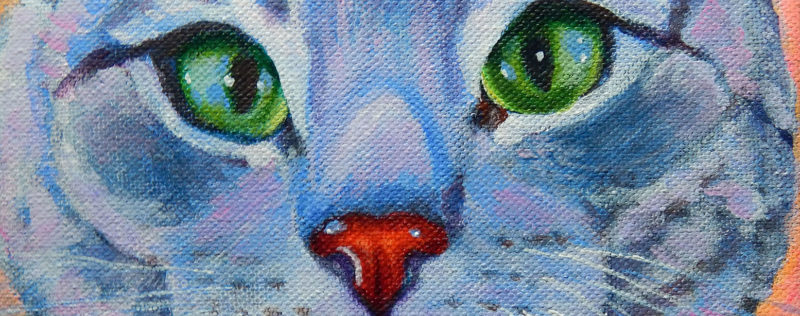
Famous Cat Artist: John Kay
March 26, 2025 by Rachel
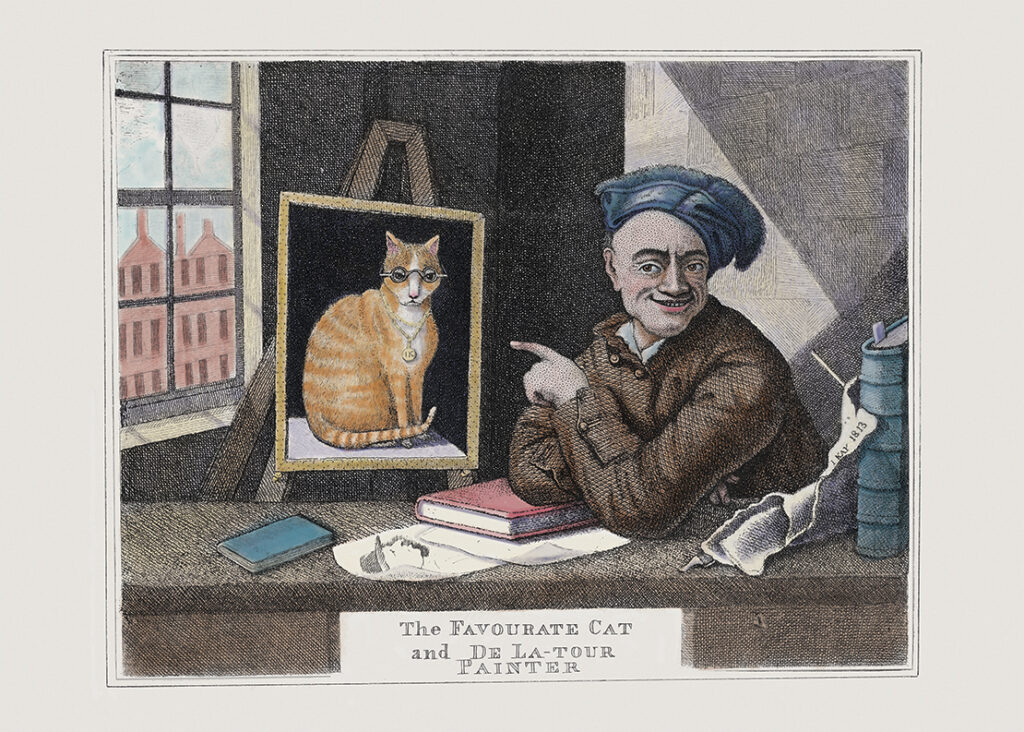
(Please note that I colorized the above black and white engraving because I felt certain John Kay preferred ginger cats.)
https://www.zazzle.com/john_kay_the_favorite_cat_colorized_card-256282462044744674
Through his engravings, John Kay (1742-1826) caricatured hundreds of Edinburgh politicians and celebrities. Some of his subjects didn’t appreciate his wit: Kay was often threatened with lawsuits. Some of those subjects even purchased his caricatures to prevent them from being seen by anyone else.
The subject of this engraving, the French painter Maurice Quentin de La Tour, would not have minded Kay’s caricature of his self-portrait: de La Tour had passed away over two decades before.
Although there was a forty-year period when de La Tour and John Kay were both alive, it is exceedingly unlikely their paths ever crossed. De La Tour was a painter in the French royal court, and John Kay was definitely of a lower social class, living in Scotland. Yet John Kay drew his caricature of de La Tour twenty-five years after the French artist’s death.
In John Kay’s engraving, the figure of de La Tour is flopped to show him pointing in the other direction. When printing with an engraving, the printed image will be reversed from what is engraved on the plate.
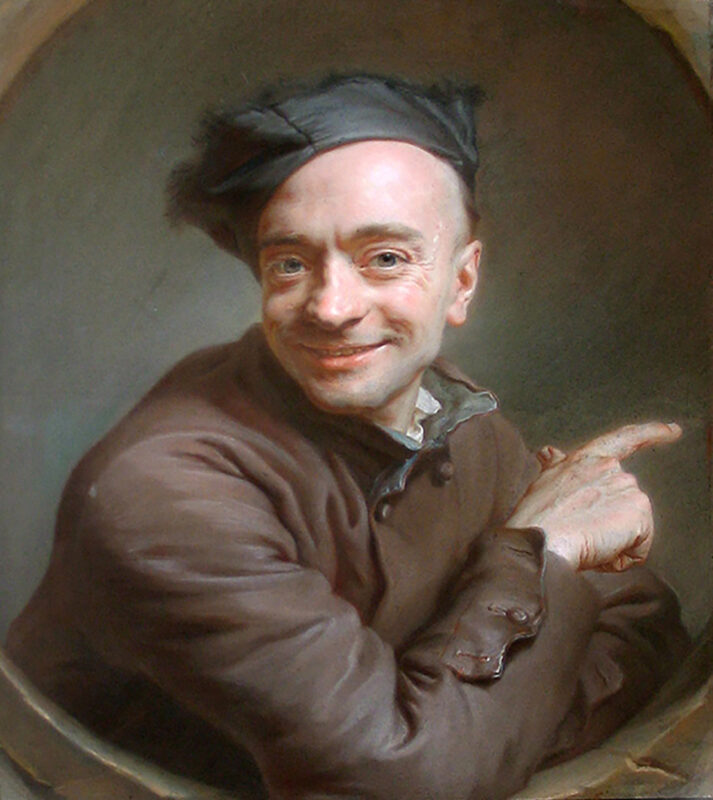
(Maurice Quentin de La Tour’s pastel self-portrait)
Many artists had already parodied de La Tour’s self-portrait, perhaps because of the way the French artist painted himself pointing beyond the frame. One can’t help wonder what de La Tour is pointing to and why it seems to amuse him. His self-portrait became well known.
The Changing Role of Cats
Maurice Quentin de La Tour was a prolific French pastel painter and philanthropist. During his lifetime (1704 to 1788), owning animals as pets versus work animals became more popular. Before this it was considered wasteful to keep an animal around unless it was earning its keep, guarding the house or catching mice.
“Favorite” was an early term for “pet.” So although nowadays we might interpret a person’s “favorite cat” to mean the favorite cat of many owned by the person, back in this time it would probably just mean a person’s “pet cat.”
Perhaps in part because they tend to be more cooperative when it comes to posing, dogs were the more popular pet in paintings at this time. Even so, I could only find a few dogs in the backgrounds of de La Tour’s paintings, and not a single cat.
So why did John Kay engrave this picture of de La Tour posing with a cat painting?
Engravers Copied Famous Artworks
If you look closely at the upright book to the right of the engraving, you will see that John Kay marked his name and the date he made it. The year—1813–was long after de La Tour had died. It was common for engravers to copy painted artworks at this time. Because the invention of photography was still a few years off, engravings were one of the few ways to share art.
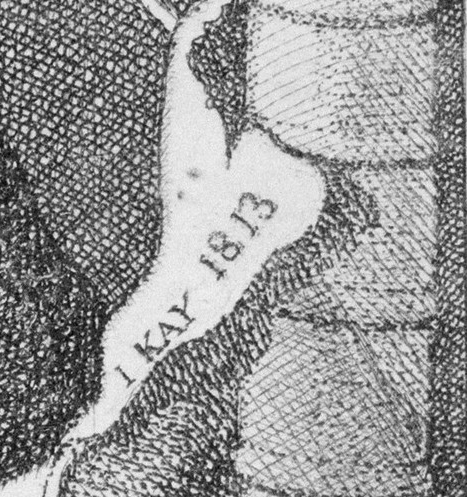
In this case the engraver, the Scottish artist John Kay, reinterpreted one of the many self-portraits de La Tour painted of himself.
Painter, Barber-Surgeon, Engraver
An accomplished self-taught miniature painter, John Kay (1742-1826) originally trained as a barber-surgeon. For centuries before, barbers not only cut hair, but also performed surgery and dentistry. If that seems odd, consider that barbers were better-skilled with knives and razors than most anyone else. During Kay’s lifetime, the rules were changed so that barber-surgeons were no longer allowed to do surgery if they also cut hair.
Once set up in Edinburgh, John Kay was employed by different genteel and noble families. Despite the new rules we can assume that he was not cutting the hair of these people but helping them medically. Because he worked so closely with them, they encouraged Kay’s artistic growth. One noble even left Kay financial support in his will.
Besides painting watercolor miniatures, Kay began to publish his etchings and engravings. Some were of historical figures. Most were caricatures of famous people or politicians of Edinburgh. He exaggerated their proportions and expressions. Or he put them in amusing situations, such as his etching of a local musician waving his cane as he conducts the braying of three donkeys.
A Self-Portrait Within a Self-Portrait
Before John Kay did his version, one of de La Tour’s students included his self-portrait in her self-portrait. Marie- Suzanne Giroust’s painting shows herself sharpening a pastel, ready to begin work on her charcoal sketch on the easel while de La Tour’s self-portrait hangs at the right as reference.
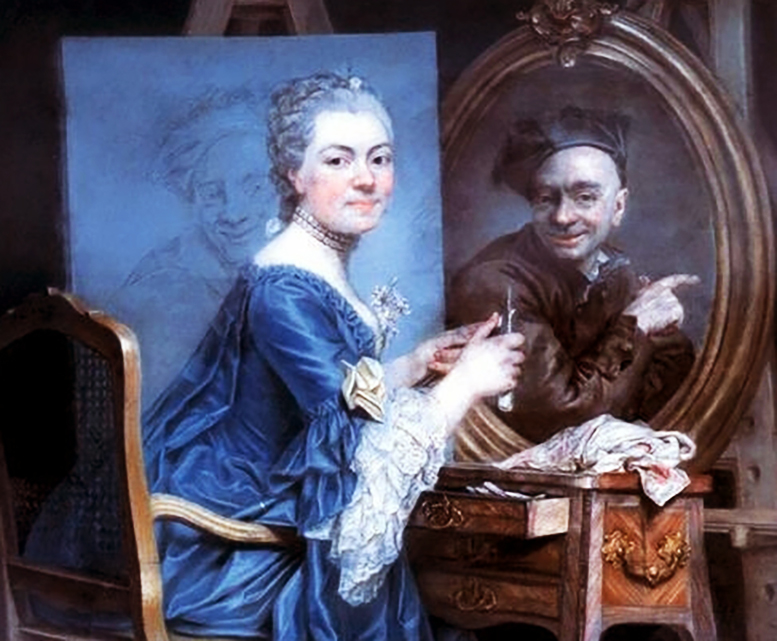
(Pastel self-portrait by Marie-Suzanne Giroust with de La Tour’s self-portrait in the background.)
It was one thing to paint a person with de La Tour’s self-portrait. But a cat? And why a common tabby cat, not an Angora or Chartreux as were popular in France at the time? Although the reputation of cats was improving—some people even saw them as symbols of political freedom—many still regarded them as unlucky, unrestrained, or evil beings.
It’s doubtful that John Kay had any idea whether de La Tour appreciated cats. But John Kay himself did. His biography includes a tongue-in-cheek boast that his tabby cat was “the largest it is believed in Scotland.”
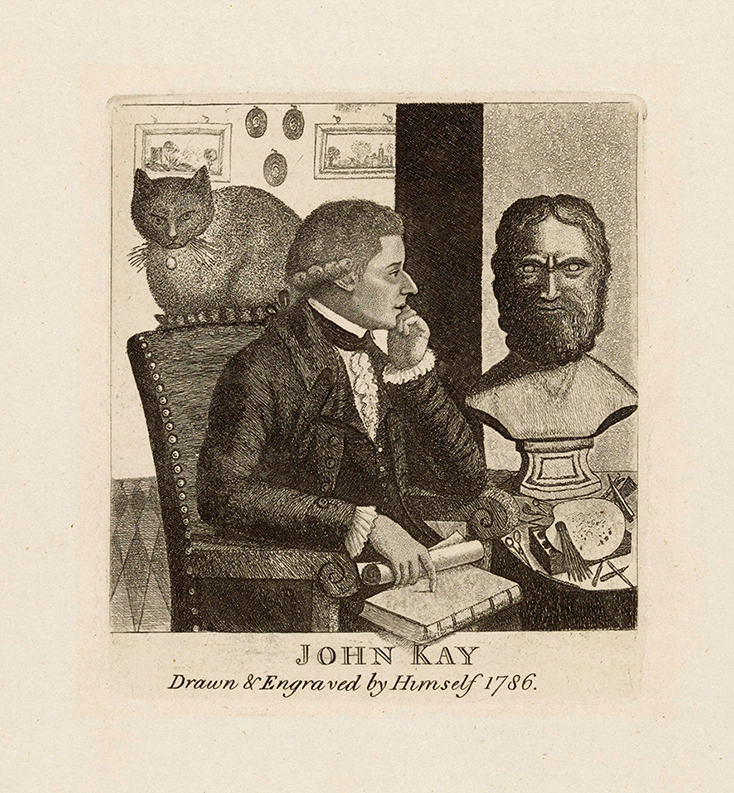
John Kay engraved this particular self-portrait 27 years before his version of de La Tour’s. The tabby in John Kay’s self-portrait wears a chain around her neck. The tabby in his engraving of de La Tour wears a similar chain. But this time the chain links a medallion engraved with his own initials: JK.
It seems the tabby in the de La Tour engraving is…John Kay’s caricature of himself. Both artists were known for their humor. Maybe John Kay couldn’t resist de La Tour’s famous and impish smile.
Another hint may be the eyeglasses the cat is wearing. At first I thought that the glasses were a nod to the superior intelligence of cats (of course), or that the white stripes around tabby eyes reminded John Kay of spectacles. But then another thought came. I suspect that when you make your living painting miniatures and etching small works, you would rely on a pair of eyeglasses to put in the finer details.






